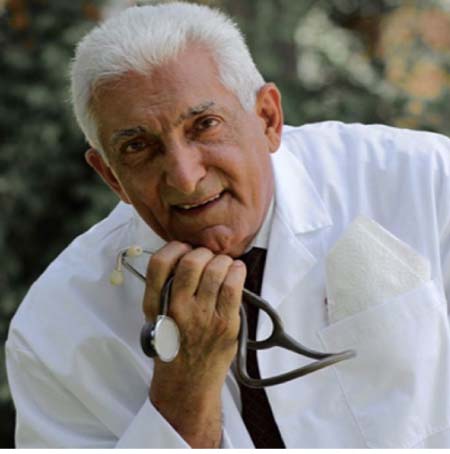
World
Health year 2017 is prevention of Diabetes disease Gambia with over 28% of
Diabetes is one of the highest what are
the risks of diabetes in children.
In
2008, an estimated 347 million people in the world had diabetes and the
prevalence is growing particularly in low- and middle-income countries.
In
2012, the disease was the direct cause of some 1.5 million deaths, with more
than 80% of those occurring in low- and middle-income countries. WHO projects
that diabetes will be the 7th leading cause of death by 2030.
Diabetes
is a chronic disease that occurs either when the pancreas does not produce
enough insulin or when the body cannot effectively use the insulin it produces.
Insulin, a hormone that regulates blood sugar, gives us the energy that we need
to live. If it cannot get into the cells to be burned as energy, sugar builds
up to harmful levels in the blood.
There are 2 main forms of the diabetes. People
with type 1 diabetes typically make none of their own insulin and therefore
require insulin injections to survive. People with type 2 diabetes, the form
that comprises some 90% of cases, usually produce their own insulin, but not
enough or they are unable to use it properly. People with type 2 diabetes are
typically overweight and sedentary, 2 conditions that raise a person’s insulin
needs.
Over
time, high blood sugar can seriously compromise every major organ system in the
body, causing heart attacks, strokes, nerve damage, kidney failure, blindness,
impotence and infections that can lead to amputations.
World
Health Day 2016: Key messages
WHO
is focusing the next World Health Day, on 7 April 2016, on diabetes because:
1.
The diabetes epidemic is rapidly increasing in many countries, with the
documented increase most dramatic in low- and middle-income countries.
2.
A large proportion of diabetes cases are preventable. Simple lifestyle measures
have been shown to be effective in preventing or delaying the onset of type 2
diabetes. Maintaining normal body weight, engaging in regular physical
activity, and eating a healthy diet can reduce the risk of diabetes.
3.
Diabetes is treatable. Diabetes can be controlled and managed to prevent
complications. Increasing access to diagnosis, self-management education and
affordable treatment are vital components of the response.
4.
Efforts to prevent and treat diabetes will be important to achieve the global
Sustainable Development Goal 3 target of reducing premature mortality from no
communicable diseases (NCDs) by one-third by 2030. Many sectors of society have
a role to play, including governments, employers, educators, manufacturers,
civil society, private sector, the media and individuals themselves.
Goal
of World Health Day 2016: Scale up prevention, strengthen care, and enhance
surveillance
The
main goals of the World Health Day 2016 campaign will be to:
1. Increase awareness about the rise in
diabetes, and its staggering burden and consequences, in particular in low-and
middle-income countries;
2. Trigger a set of specific, effective and
affordable actions to tackle diabetes. These will include steps to prevent
diabetes and diagnose, treat and care for people with diabetes; and
Launch
the first Global report on diabetes, which will describe the burden and
consequences of diabetes and advocate for stronger health systems to ensure
improved surveillance, enhanced prevention, and more effective management of
diabetes.
Diabetes
Key
facts
·
In 2014 the global prevalence of diabetes * was estimated to be 9% among adults
aged 18+ years (1).
·In
2012, an estimated 1.5 million deaths were directly caused by diabetes (2).
· More than 80% of diabetes deaths occur in
low- and middle-income countries
· WHO projects that diabetes will be the 7th
leading cause of death in 2030 (3).
· Healthy diet, regular physical activity, maintaining
a normal body weight and avoiding tobacco use can prevent or delay the onset of
type 2 diabetes (4).
What
is diabetes
Diabetes
is a chronic disease that occurs either when the pancreas does not produce
enough insulin or when the body cannot effectively use the insulin it produces.
Insulin is a hormone that regulates blood sugar (5). Hyperglycemia, or raised
blood sugar, is a common effect of uncontrolled diabetes and over time leads to
serious damage to many of the body’s systems, especially the nerves and blood
vessels.
In
2014, 9% of adults 18 years and older had diabetes. In 2012 diabetes was the
direct cause of 1.5 million deaths. More than 80% of diabetes deaths occur in
low- and middle-income countries.
Type
1 diabetes
Type
1 diabetes (previously known as insulin-dependent, juvenile or childhood-onset)
is characterized by deficient insulin production and requires daily
administration of insulin. The cause of type 1 diabetes is not known and it is
not preventable with current knowledge.
Symptoms
include excessive excretion of urine (polyuria), thirst (polydipsia), constant
hunger, weight loss, vision changes and fatigue. These symptoms may occur
suddenly.
Type
2 diabetes
Type
2 diabetes (formerly called non-insulin-dependent or adult-onset) results from
the body’s ineffective use of insulin. Type 2 diabetes comprises 90% of people
with diabetes around the world (5), and is largely the result of excess body
weight and physical inactivity.
Symptoms
may be similar to those of Type 1 diabetes, but are often less marked. As a
result, the disease may be diagnosed several years after onset, once
complications have already arisen.
Until
recently, this type of diabetes was seen only in adults but it is now also
occurring in children.
Gestational
diabetes
Gestational
diabetes is hyperglycaemia with blood glucose values above normal but below
those diagnostic of diabetes, occurring during pregnancy. Women with
gestational diabetes are at an increased risk of complications during pregnancy
and at delivery. They are also at increased risk of type 2 diabetes in the
future.
Gestational
diabetes is diagnosed through prenatal screening, rather than reported
symptoms.
Impaired
glucose tolerance (IGT) and impaired fasting glycaemia (IFG)
Impaired
glucose tolerance (IGT) and impaired fasting glycaemia (IFG) are intermediate
conditions in the transition between normality and diabetes. People with IGT or
IFG are at high risk of progressing to type 2 diabetes, although this is not
inevitable.
What
are common consequences of diabetes
Over
time, diabetes can damage the heart, blood vessels, eyes, kidneys, and nerves.
·
Diabetes increases the risk of heart disease and stroke. In a multinational
study, 50% of people with diabetes die of cardiovascular disease (primarily
heart disease and stroke) (6).
· Combined with reduced blood flow, neuropathy
(nerve damage) in the feet increases the chance of foot ulcers, infection and
eventual need for limb amputation.
· Diabetic retinopathy is an important cause of
blindness, and occurs as a result of long-term accumulated damage to the small
blood vessels in the retina. One percent of global blindness can be attributed
to diabetes (7).
· Diabetes is among the leading causes
of kidney failure (4).
· The overall risk of dying among people with
diabetes is at least double the risk of their peers without diabetes (8).
How
can the burden of diabetes be reduced?
Prevention
Simple
lifestyle measures have been shown to be effective in preventing or delaying
the onset of type 2 diabetes. To help prevent type 2 diabetes and its
complications, people should:
·
achieve and maintain healthy body weight;
·
be physically active – at least 30 minutes of regular, moderate-intensity
activity on most days. More activity is required for weight control;
·
eat a healthy diet of between 3 and 5 servings of fruit and vegetables a day
and reduce sugar and saturated fats intake;
·
avoid tobacco use – smoking increases the risk of cardiovascular diseases.
Diagnosis
and treatment
Early
diagnosis can be accomplished through relatively inexpensive blood testing.
Treatment
of diabetes involves lowering blood glucose and the levels of other known risk
factors that damage blood vessels. Tobacco use cessation is also important to
avoid complications.
Interventions
that are both cost saving and feasible in developing countries include:
·
moderate blood glucose control. People with type 1 diabetes require insulin;
people with type 2 diabetes can be treated with oral medication, but may also
require insulin;
·
Blood pressure control;
· Foot care.
Other
cost saving interventions includes:
Screening
and treatment for retinopathy (which causes blindness);
Blood
lipid control (to regulate cholesterol levels);
Screening
for early signs of diabetes-related kidney disease.
These
measures should be supported by a healthy diet, regular physical activity,
maintaining a normal body weight and avoiding tobacco use.
WHO
response
WHO
aims to stimulate and support the adoption of effective measures for the
surveillance, prevention and control of diabetes and its complications,
particularly in low and middle-income countries. To this end, WHO:
provides
scientific guidelines for diabetes prevention;
develops
norms and standards for diabetes diagnosis and care;
builds
awareness on the global epidemic of diabetes; celebration of World Diabetes Day
(14 November);
conducts
surveillance of diabetes and its risk factors.
The
WHO Global strategy on diet, physical activity and health complements WHO’s
diabetes work by focusing on population-wide approaches to promote healthy diet
and regular physical activity, thereby reducing the growing global problem of
overweight and obesity.
Defined
as fasting blood glucose >= 7 mmol/l or on medication for raised blood
glucose or with a history of diagnosis of diabetes.
What
are the risks of diabetes in children
A:
The frequency of diabetes is rising around the world, and studies are showing
children are at increasing risk of developing the disease. About 350 million
people worldwide have the illness, a number likely to more than double in the
next 20 years. Over time, diabetes can damage the heart, blood vessels, eyes,
kidneys and nerves - causing chronic problems and early death.
Type
1 diabetes (sometimes called insulin-dependent, juvenile or childhood-onset
diabetes) occurs when the pancreas does not produce enough insulin, a hormone
that regulates blood sugar. The cause is not known, but it is thought to be the
result of a combination of genetic and environmental factors.
Many
countries are documenting higher numbers of newly diagnosed cases of type 1
diabetes, particularly in younger children. Interestingly, some disease
patterns among children resemble infectious disease epidemics. Currently, there
is no known way to prevent type 1 diabetes.
Type
2 diabetes (sometimes called non-insulin-dependent or adult-onset diabetes)
happens when the body cannot effectively use the insulin it produces. Often
preventable, it can result from excess body weight and physical inactivity, and
sometimes, a genetic predisposition.
Recently,
type 2 diabetes has increasingly been reported in children and adolescents, so
much so that in some parts of the world type 2 diabetes has become the main
type of diabetes in children. The global rise of childhood obesity and physical
inactivity is widely believed to play a crucial role. Healthy eating and
lifestyle habits are a strong defense against the disease.
For
further information try on WHO web site Diabetes disease, Gambia Diabetes
association, Email to drh_azadehmd@yahoo.com , Text only to Dr Azadeh
002207774469/3774469 from 3-6 pm
Author
DR AZADEH Senior Lecturer at the University of the Gambia, Senior Consultant in
Obstetrics & Gynaecology, Clinical Director of Medicare Health Services
Read Other Articles In Article (Archive)
‘Africa cannot overcome its problems unless women take the lead’
Mar 3, 2014, 9:55 AM




